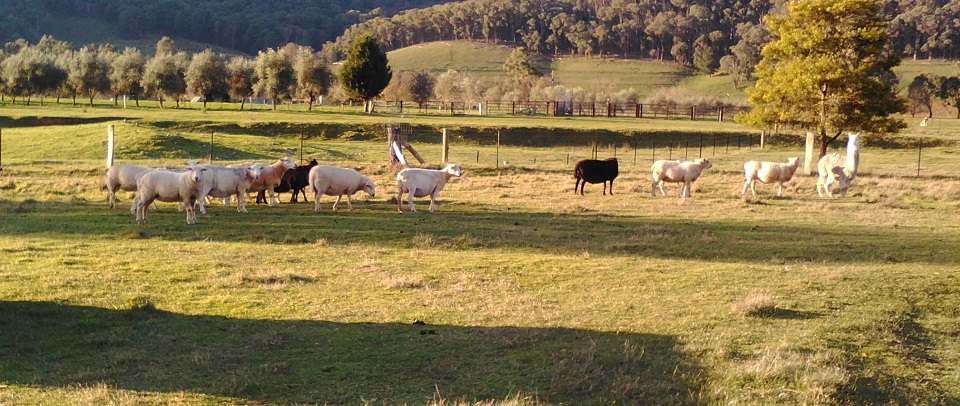Where's those lambs?

I blinked and a month has gone by since the last post.
August 15 was marked on the calendar as Day 1 for the lambing to start. But two days later, and no lambs. Lots of ready-to-pop sheep-like-balloons…or maybe they are balloon-like-sheep.
There's a half a dozen whose udders have bagged up and reddened, and two in particular who look tired and ready. The rest will follow on in due course.
We've started the routine we developed last year to protect new borns from foxes. In the evening they are steered into the fox-proof goose paddock. There's five minutes of madness while the milling sheep and honking geese sort themselves out, but its working ok. In the morning they are waiting by the gate and are let out, and they spend the day free-ranging.
A new layer of complexity is the surplus roosters who are currently being parked in the goose paddock. They get in the way of the geese, run into the goose pen just as we are trying to close it, and are generally an extra bit of chaos. We separated them from the chickens because there was a bit too much romance (i.e biffo) going on, and the chickens were looking a bit bedraggled. The spare roosters are paying their way by kindly providing an early detection system for foxes. They'll go before a goose does, I figure, so if a rooster disappears I will know to double check the fences.
They could, of course, go into a pot, but these are small bantam-crosses, and not worth the effort of plucking. Someone has expressed interest in taking some, so this is a good way to hold them while keeping our chickens happy.
The sheep are coming for food. We give them a handful of pellets. It's not much of a bribe, an insultingly small serve, and they only get a mouthful each, but they fall for it willingly every night.
They don't need the food, they are all so healthy and fat.
They also get a trailer full of olive tree prunings. They descend on the pile in a frenzy, pushing and shoving into the stack. I usually turn the pile over the next day and they get another serve out of it.
Most the time there are three separate piles of prunings at various stages of being consumed. When its been picked bare the twigs and leafless (and usually barkless) branches are collected and put through a chipper. We have endless ways to use up the wood chip.
Last year I was doing finessing pruning, opening up the trees to closer approximate the correct goblet shape. This year is more brutal, dealing with the tress that are badly shaped for mechanical harvesting. The harvester needs almost a metre of single trunk to grip and shake. Some of our trees have stumpy stems, or worse, multiple mature trunks. The harvester can't grip these and the trees get bypassed.
The finessing was done with secateurs and a pruning saw, and some days I was doing three hours of pruning to keep up the supply for the sheep. This year I've pruning with a chainsaw., and I'm done in twenty minutes. With older trees that have been neglected, or missed, sometimes half a tree is removed. Its shocking to see, but the shapely tree that remains will recover quickly. We brutally pruned some ugly mongrel trees last year and they are now elegant and shapely.
One problem though, is that the cows favour the pruned trees, and drop by after I've heavily pruned a tree and break off the remnant branches. This is pretty annoying, as they can rapidly reduce a small tree to a stump. We've been gradually accumulating cages to put around these trees to keep the cattle off.
